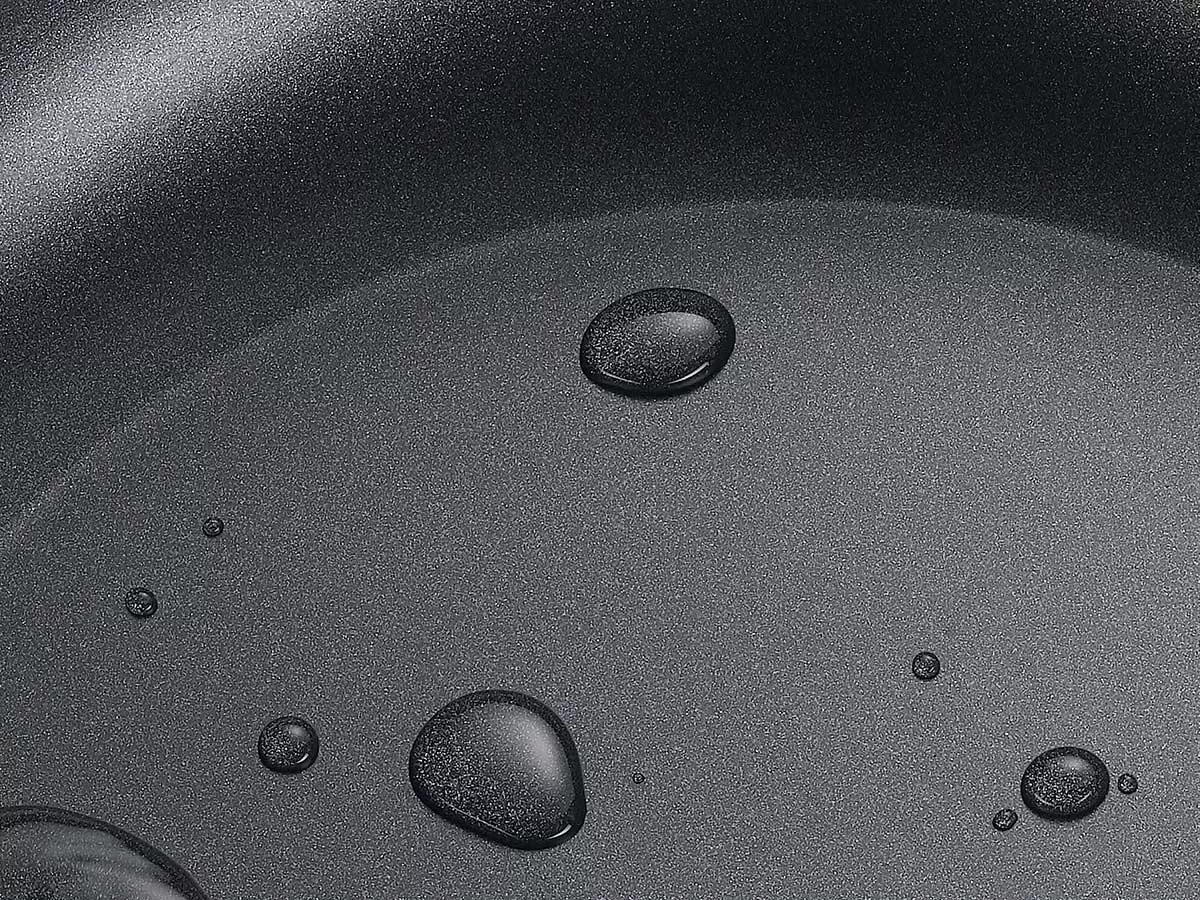In our everyday home cooking, nonstick cookware have become kitchen staples. These cooking companions are hailed for their convenience in flipping pancakes, turning sausages, and frying eggs. However, a cloud of controversy looms over their safety, with conflicting claims about potential health risks, including associations with cancer. This article aims to delve into the intricacies of nonstick cookware, exploring its composition, health implications, and the question of whether it is truly safe for daily culinary use.
Understanding Nonstick Cookware
Nonstick cookware, featuring frying pans and saucepans, is coated with a material known as polytetrafluoroethylene (PTFE), a synthetic chemical composed of carbon and fluorine atoms, was introduced in the 1930s. Its allure lies in providing a nonreactive, nonstick, and nearly frictionless surface.
The convenience of a nonstick surface makes PTFE-coated cookware an ideal choice for effortless cooking and easy cleanup. Its nonstick nature reduces the need for excessive oil or butter, offering a healthier approach to cooking and frying food.
While PTFE finds applications beyond the kitchen, concerns regarding the safety of nonstick cookware have emerged in recent years. Investigations primarily focus on a chemical called perfluorooctanoic acid (PFOA), once used in the production of nonstick cookware but no longer employed today. Additionally, attention is directed towards the potential risks associated with overheating PTFE.
As we navigate the landscape of nonstick cookware, the following segments will delve deeper into the safety considerations, dispelling myths and shedding light on the facts surrounding this culinary essential.
PFOA Exposure and PTFE Products
In the realm of cookware, the association between PTFE and PFOA (perfluorooctanoic acid) has undergone a transformative journey, impacting the safety perceptions of nonstick products. The good news for modern kitchens is that all PTFE products are now PFOA-free, alleviating concerns about PFOA exposure. However, it's crucial to note that PFOA was utilized in PTFE production until 2013. During manufacturing, high temperatures typically burned off most PFOA on pots, leaving only trace amounts in the final product.
Despite this residual presence, research indicates that PTFE cookware is not a significant source of PFOA exposure. PFOA has been associated with various health conditions, including thyroid disorders, chronic kidney disease, liver disease, testicular cancer, infertility, and low birth weight. The PFOA Stewardship Program initiated by the US Environmental Protection Agency (EPA) in 2006 led to the removal of PFOA from PTFE products by 2013, ensuring their PFOA-free status.
PFAS and the Ongoing Quest for Safety
While PFOA has exited the PTFE equation, the spotlight now shifts to PFAS (Per- and Polyfluorinated Substances) , components not fully understood. Research endeavors are actively underway to unravel the potential health risks associated with these elements present in PTFE products.
The U.S. Consumer Product Safety Commission and the EPA have both raised concerns about PFAS in various products, including non-stick cookware. The FDA has also provided information on the current understanding of PFAS' safety, acknowledging ongoing research to grasp the full impact of these ingredients on the human body.
Overheating Risks and PTFE
PTFE, a generally safe and stable compound, undergoes a transformation at temperatures exceeding 500°F (260°C). Beyond this threshold, PTFE coatings on nonstick cookware start to break down, releasing toxic chemicals into the air. Inhalation of these fumes may result in polymer fume fever, commonly known as the PTFE flu. Symptoms include temporary flu-like discomfort such as chills, fever, headache, and body aches, typically resolving within 12–48 hours. While serious side effects have been reported in cases of prolonged exposure to extreme temperatures (at least 730°F or 390°C) over extended periods, adhering to sensible cooking practices minimizes the associated health risks.
Cooking Safely with Nonstick Cookware
To ensure safe and healthy cooking with nonstick cookware, consider the following tips:
- Prevent Empty Preheating: Avoid preheating empty pans as they can reach high temperatures rapidly, potentially releasing polymer fumes. Always ensure there is food or liquid in pots and pans before preheating.
- Opt for Moderate Heat: Cook on medium or low heat and avoid high-temperature cooking techniques like broiling, which surpass the recommended levels for nonstick cookware.
- Ventilate Your Kitchen: Enhance airflow by turning on exhaust fans or opening windows during cooking to dissipate any fumes.
- Use Gentle Utensils: Opt for wooden, silicone, or plastic utensils to prevent scuffs and scratches on the nonstick surface, preserving the longevity of your cookware.
- Hand Wash with Care: Gently clean pots and pans with a sponge and warm, soapy water. Avoid abrasive materials like steel wool or scouring pads, as they can damage the nonstick surface.
- Replace When Worn: Consider replacing cookware when PTFE coatings show visible signs of deterioration, such as excessive scratches, peeling, flaking, or chipping.
Exploring Nonstick Alternatives for Your Kitchen
As we embark on a culinary journey, the debate surrounding nonstick cookware continues. While modern nonstick cookware, free of PFOA (perfluorooctanoic acid), is generally deemed safe, some individuals may seek alternatives due to lingering concerns. Let's explore a range of PTFE-free options that not only offer versatility in the kitchen but also cater to various cooking preferences.
- Cast-Iron Cookware:
Seasoned properly, cast iron boasts natural nonstick properties. This timeless choice not only endures the test of time but also withstands high temperatures, surpassing the limits considered safe for traditional nonstick options.
- Ceramic-Coated Cookware:
A relatively recent addition to the culinary landscape, ceramic cookware combines excellent nonstick properties with a sleek aesthetic. However, it's essential to handle it with care, as the coating can be prone to scratching.
- Silicone-Coated Cookware:
Synthetic rubber finds its place in bakeware and kitchen utensils. While not suitable for direct heat, silicone excels in baking applications, offering a nonstick solution for those with a penchant for sweet creations.
Caring for Nonstick Pans: Essential Tips
Understanding the importance of keeping nonstick cookware in top condition is crucial. Here's how you can maintain and extend the life of your nonstick pans.
Use Non-Metallic Utensils
Always use plastic or wooden utensils with your nonstick pans. Metal tools can damage the coating, leading to deterioration and loss of the nonstick qualities.
Avoid Heating an Empty Pan
One common mistake is heating a nonstick pan without anything in it. To avoid overheating, add some oil if you're preheating.
Gently Wash Your Pans
Nonstick pans should be washed gently by hand. Since they don’t hold onto food residues tightly, a soft sponge and mild washing is enough. Avoid rough cleaning tools that could harm the coating.
While some nonstick pans are dishwasher-safe, it's better to hand wash them. In dishwashers, ensure they don't come into contact with items that might scratch the surface. However, hand washing is usually recommended for its simplicity and effectiveness.
Store Nonstick Cookware Properly
When storing, keep other items off your nonstick pans. If they must be stacked, use cloth separators to prevent damage to the coating.
Know When to Replace Them
Nonstick pans don't last indefinitely. If you notice flaking or find yourself scrubbing more often, it's time for a new pan. This helps ensure your cooking remains efficient and enjoyable.
Conclusion
In conclusion, while PTFE cookware remains a convenient choice for everyday use, exploring alternatives allows you to align your kitchen tools with your preferences and concerns. As research unfolds, the culinary landscape evolves, presenting an array of options to cater to diverse cooking styles and safety considerations. Stay tuned for more insights into the dynamic world of kitchen essentials. If you need your non-stick coating solutions, please contact Pfluon, your reliable nonstick coating supplier and manufacturer!





